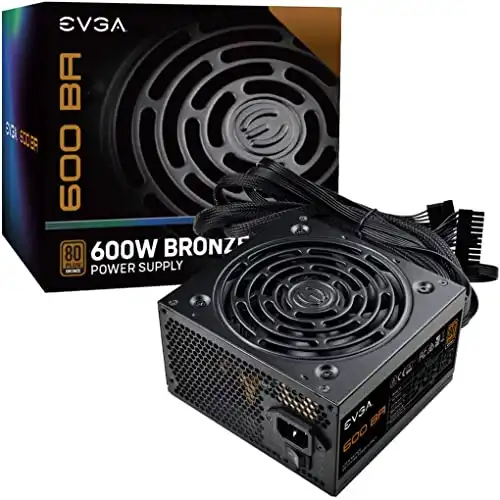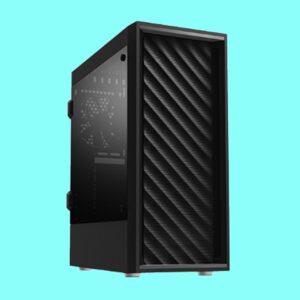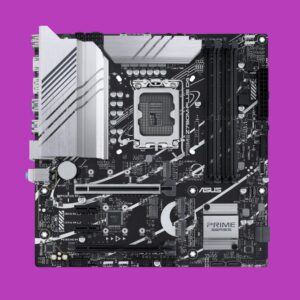If you’re building your own PC, shopping for a power supply unit for your new rig can feel like a tall order. Not only do you have to contend with finding a sufficient wattage to accommodate your components, but you also have to sift through various wattages, 80-Plus efficiency ratings, brands, modularities, form-factors, and more.
For this reason, we decided to create a guide on the differences between the most common Bronze-rated EVGA power supplies. EVGA is, alongside Corsair, probably the most prominent name in PSUs. Even their cheapest units are of extremely solid quality, and come with a 3-year warranty. By breaking down the differences in these Bronze units, hopefully we can make the PSU-picking process a little bit easier.
EVGA Power Supply Naming Scheme
With EVGA power supplies in particular, it may seem as if there’s no rhyme or reason to their naming schemes. Most units have a two-character suffix tacked onto the product name, which can seem meaningless if you don’t know what to look for. If you look closely, however, you’ll see some patterns emerge.
The first letter of any EVGA PSU suffix usually indicates the 80-Plus efficiency rating. 80-Plus is an efficiency standard that gives prospective buyers an idea of how energy-efficient a given unit is under various loads. To meet the minimum 80-Plus Bronze requirements, for instance, a unit must be at least 82% efficient at loads between 20% and 100%, and must be at least 85% efficient at 50% load.


Thus, an EVGA power supply ending with B5 is a Bronze power supply, GD is gold, P+ is Platinum, and T2 would be Titanium. EVGA also has 80-Plus White (e.g. W1) and non-rated (e.g. N1) units. They currently don’t manufacture any silver models.
Before the suffix, the wattage is typically listed. Thus, the 650 GT is easily determined to be a 650W unit, while the 1000 P5 is an 1000W SKU.
Putting these concepts together, we can easily figure that the EVGA SuperNova 750 G6 is a 750W, Gold-rated PSU. Meanwhile, the 510 BP is a 510-watt Bronze unit.
Still, there’s much that these names don’t tell us in regards to size, type of fan, modularity, and several other aspects of performance and design. This is what we’ll look at in this guide, for all EVGA Bronze power supplies.
EVGA Bronze Power Supply Overview
There are five main Bronze PSU “series” we’ll consider in this article:
- BR
- BA
- BP
- BQ
- B5
Each of these series are available in several different wattages so you could, for example, get a B5 unit that supplies anywhere from 550 to 850 watts.
Technically speaking, there are at least three other EVGA Bronze series: B1, B2, and B3. These are simply predecessors to the B5 line, and aren’t actively manufactured anymore. As such, they’ve become largely obsolete, and are difficult to obtain at anywhere near retail price. Consequently, we won’t go into too much detail on these older models, since this would only complicate things further.
With all of that out of the way, let’s have a look at the differences between the BR, BA, BP, BQ, and B5-series power supplies.
Release Date
Age is probably the least important consideration when choosing a power supply, at least where the above models are concerned. This is because any reasonably recent piece of hardware manufactured by EVGA will be perfectly suitable for use in a PC, with the caveat that it isn’t preowned. However, it doesn’t hurt to touch on the release dates of these Bronze units.
Also note that release date does not necessarily correspond to date of manufacture; as long as a certain model hasn’t been discontinued, units are still be produced even if the product was originally released several years ago.
EVGA’s BQ-series is by far the earliest, having released in December of 2016. BR is second in line, as it debuted in June of 2018. The rest all came out in 2020: The B5 line first in March, followed by BA in July and BP in November.
Modularity
Power supply modularity is one of the most important aspects of design, especially if you care about keeping the inside of your PC build as neat and uncluttered as possible.
A fully modular power supply allows you to use only the cables you need, while a semi-modular unit has the most common cables (like the 24-pin ATX motherboard connector and CPU connector) built into the power supply, while others can be added as desired.
Finally, non-modular power supplies come with every cable built-in. This means you’ll almost certainly have extraneous cables eating up precious real estate within your chassis. Because of this, semi-modular and fully modular power supplies are preferable unless you’re trying to save as much money as possible.
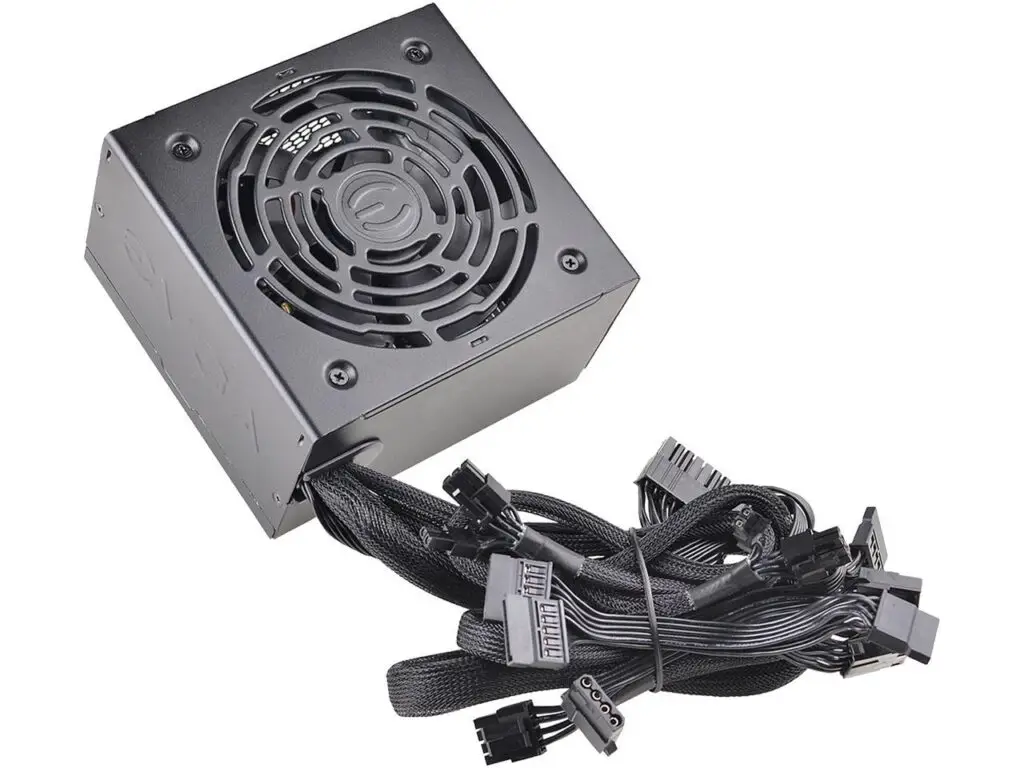

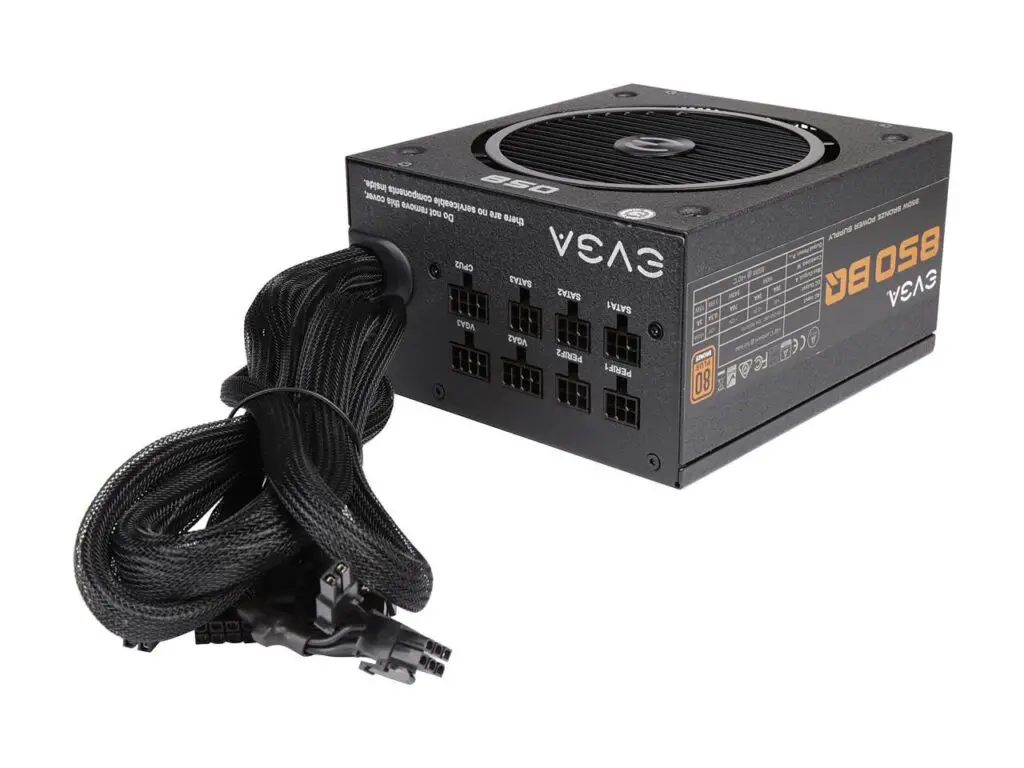

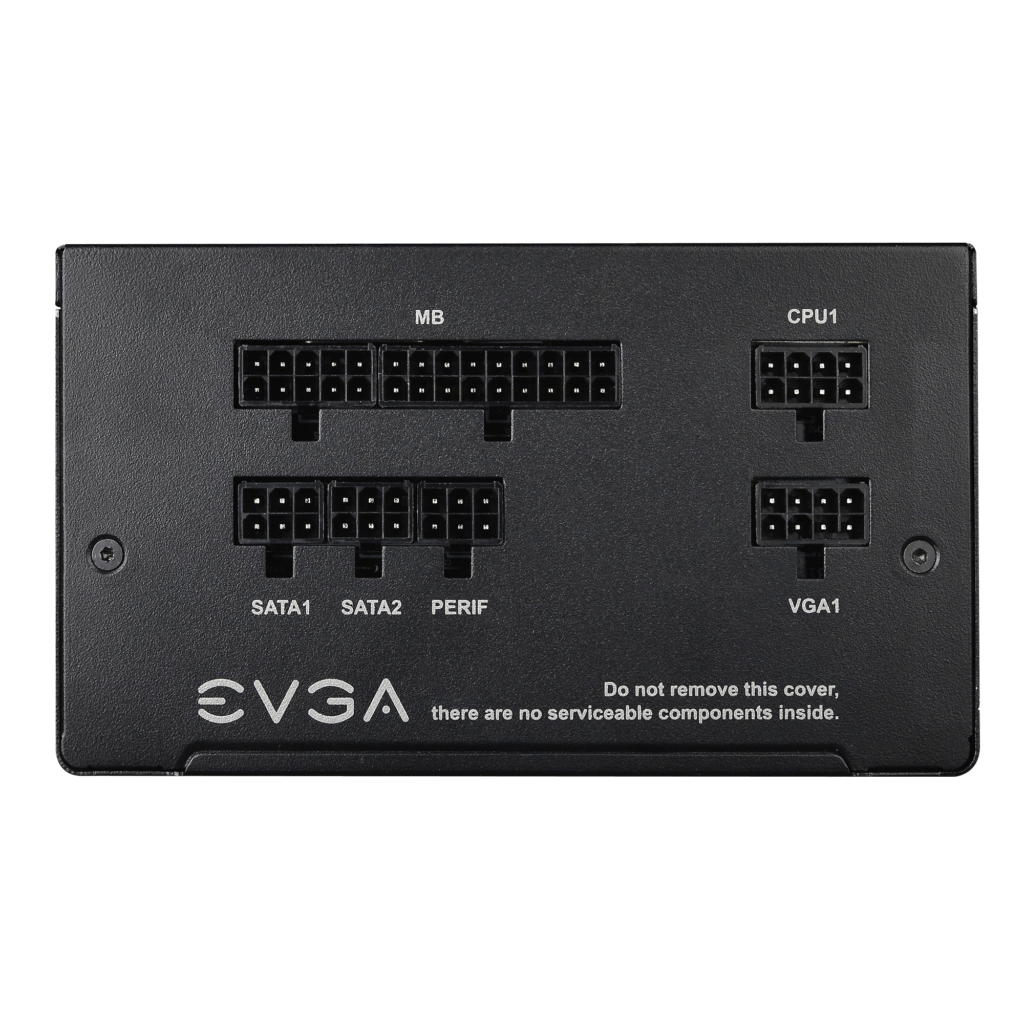

BP, BR, and BA are all non-modular. BQ is the only semi-modular line, while B5 is the only one that’s fully modular. This puts BQ and B5 ahead of the crowd, at least as far as modularity is concerned.
Japanese Capacitors
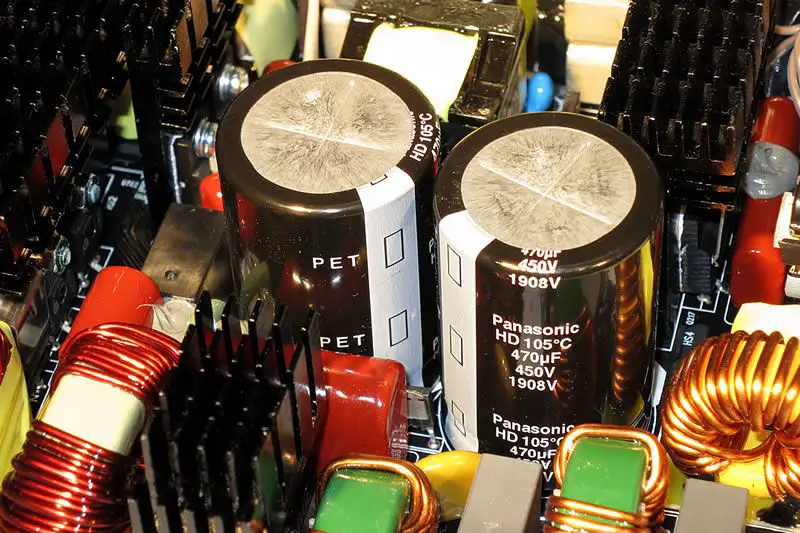

Japanese capacitors are considered the industry best, as they tend to be the most efficient and long-lasting. With that being said, capacitors from other sources like China aren’t necessarily of poor quality, especially in power supplies made by highly reputable companies such as EVGA.
The difference between Japanese and capacitors and the rest is truthfully a bit overblown, so you likely won’t notice a difference in performance or lifespan, regardless of whether or not the PSU you purchase has them.
EVGA’s BR, BA, and BP lines utilize no Japanese capacitors in their construction. The BQ series uses them, but only on the main PCB. B5 is the only Bronze EVGA lineup to feature 100% Japanese capacitors, but this is only for the 750W and 850W SKUs. The 550 and 650-watt B5 makes have only a Japanese main capacitor like BQ.
Wattages
Each line of power supplies is available in a slightly different range of wattages. While all of them include at least a couple of units within the most common 500-600W range, some lines offer up to 850W for more energy-hungry systems. Available wattages for each line are as follows:
- BR: 450W, 500W, 600W, 700W
- BA: 500W, 600W
- BP: 460W, 510W, 610W, 650W, 710W, 750W
- BQ: 500W, 600W, 650W, 700W, 750W, 850W
- B5: 550W, 650W, 750W, 850W
Thus, B5 and BQ have the most potent available offerings, at 850W. Keep in mind, an 850W PSU is enough to handle even the most powerful graphics card, the RTX 4090, so users will rarely have occasion to purchase these highest-end models (and an RTX 4090 will almost never be paired with a Bronze PSU anyway).
BR and BP represent the lowest end of the spectrum, with 450W and 460W models, respectively. Having low-wattage units available is attractive since these tend to be a bit cheaper and, if your system doesn’t need very much power, it’s nice to have the option of saving $20 or so bucks versus a more powerful model.
However, low wattage does not always translate to lower price, so be sure to shop around to see if, say a 550W model is cheaper than the 450W one you were considering.
Size
Dimensions vary within series, as higher-wattage units are sometimes longer than their lower-output counterparts. While size isn’t all that important (since the large majority of cases can fit any ATX power supply), a smaller unit does free up a bit of space. We’re talking about differences of 30mm, or about 1.2 inches, on the high end, so the difference won’t be massive.
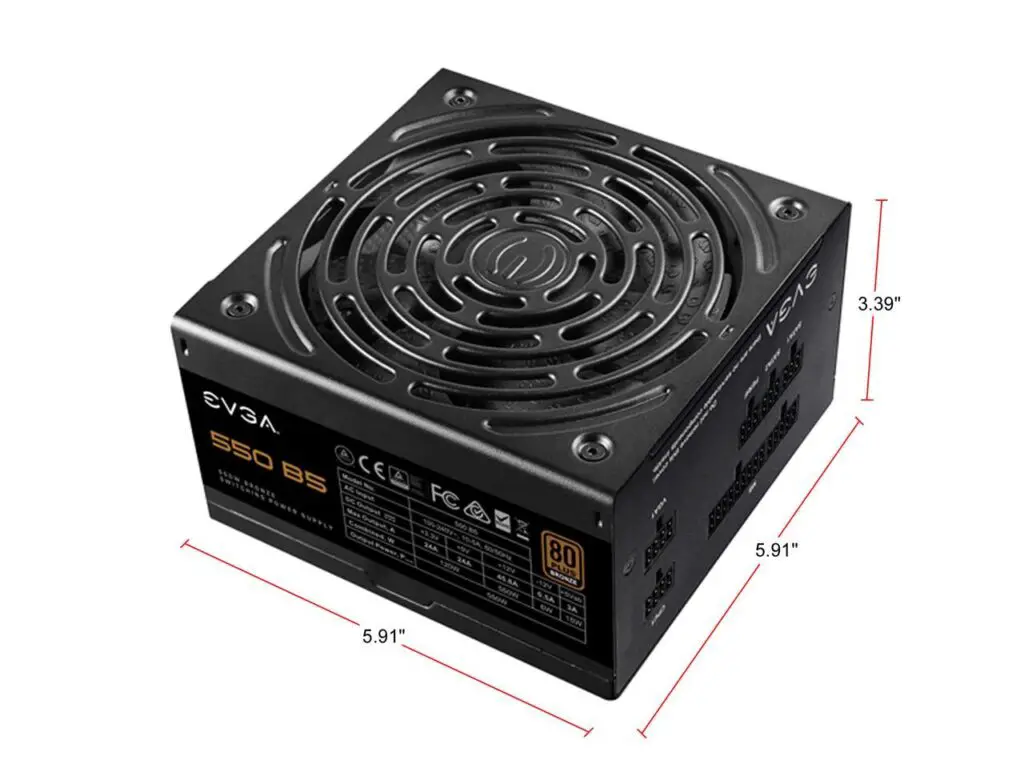

To ensure we’re comparing apples to apples, we’ll be looking at the dimensions of each series’ unit closest to 500W in output: the 500 BR, 500 BA, 510 BP, 500 BQ, and 550 B5.
These power supplies have the following dimensions (Height x Width x Length):
- BR: 85mm x 150mm x 140mm
- BA: 86mm x 150mm x 140mm
- BP: 86mm x 150mm x 120mm
- BQ: 85mm x 150mm x 140mm
- B5: 86mm x 150mm x 150mm
The BR, BA, and BQ series are all within a millimeter of each other, at 85 or 86mm x 150mm x 140mm. The BP is notable for its especially small form, at a length of only 120mm, while the B5 is especially large at 150mm long.
Fans
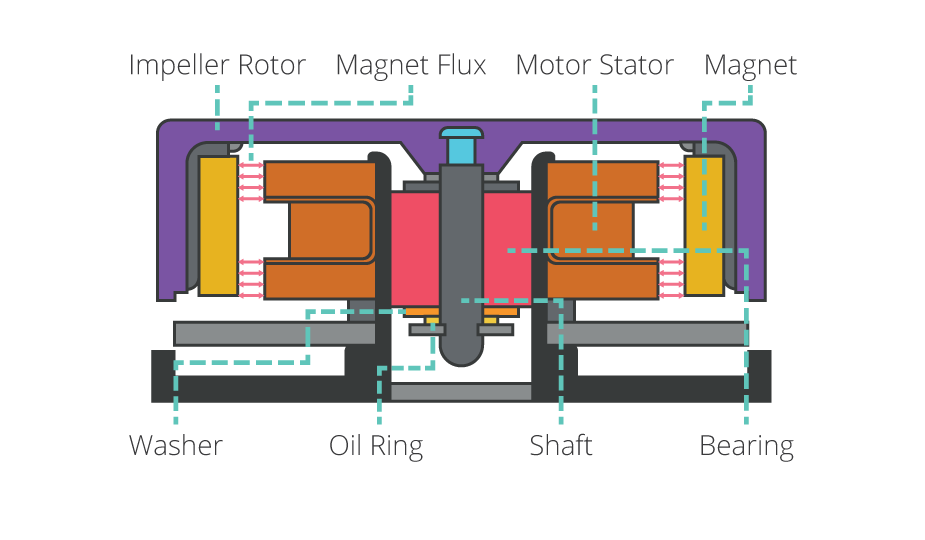

Much like a CPU cooler, graphics card, or chassis, PSUs use fans to dissipate hot air and keep operating temperatures as low as possible. The type of fan plays a role in the overall lifespan of a power supply, and it also contributes to noise levels.
The BR and BA both utilize 120mm sleeve bearing fans, which are the lowest-quality of any used in EVGA Bronze PSUs. These produce the most noise, especially as they get older, and are the least durable of any included in these units.
The BP uses a higher-end 115mm hydraulic bearing fan. This offers reduced noise production and has a longer shelf life than a standard sleeve bearing fan.
Finally, the BQ and B5 make use of a fluid dynamic bearing fan for maximum performance. The B5‘s is an 135mm fan, while the BQ‘s is a bit smaller at 120mm. These fluid dynamic bearings are superior to the fans used in the BR, BA, and BP, both in lifespan and in sound levels.
Warranty
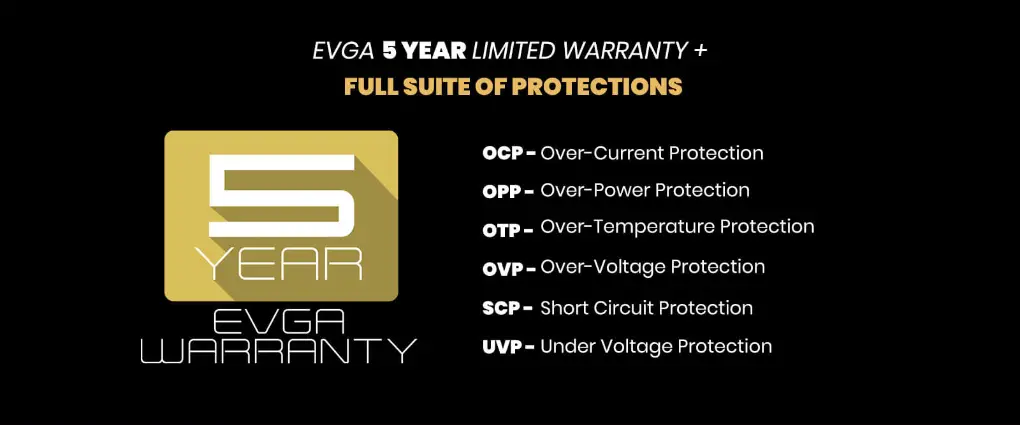

Finally, we have the warranty to consider. A 3-year warranty is standard for EVGA Bronze power supplies, with the BR, BA, BP, and BQ all coming with this. The B5 has a superior 5-year warranty, so buyers are protected for longer in case of defects.
Pricing
There’s very little rhyme or reason to the pricing of power supplies, and prices are in eternal flux. For this reason, we won’t make any generalizations in regards to price; even the B5 is sometimes cheaper than non-modular models, depending on where you shop.
Ranking EVGA’s BR, BA, BP, BQ, and B5
With all of these points considered, our final rankings of the BR, BA, BP, BQ, and B5 are as follows. Price is not taken into account, since it is so inconsistent with power supplies. This is a ranking of series, not wattages; we only included different wattages due to varying availability.



